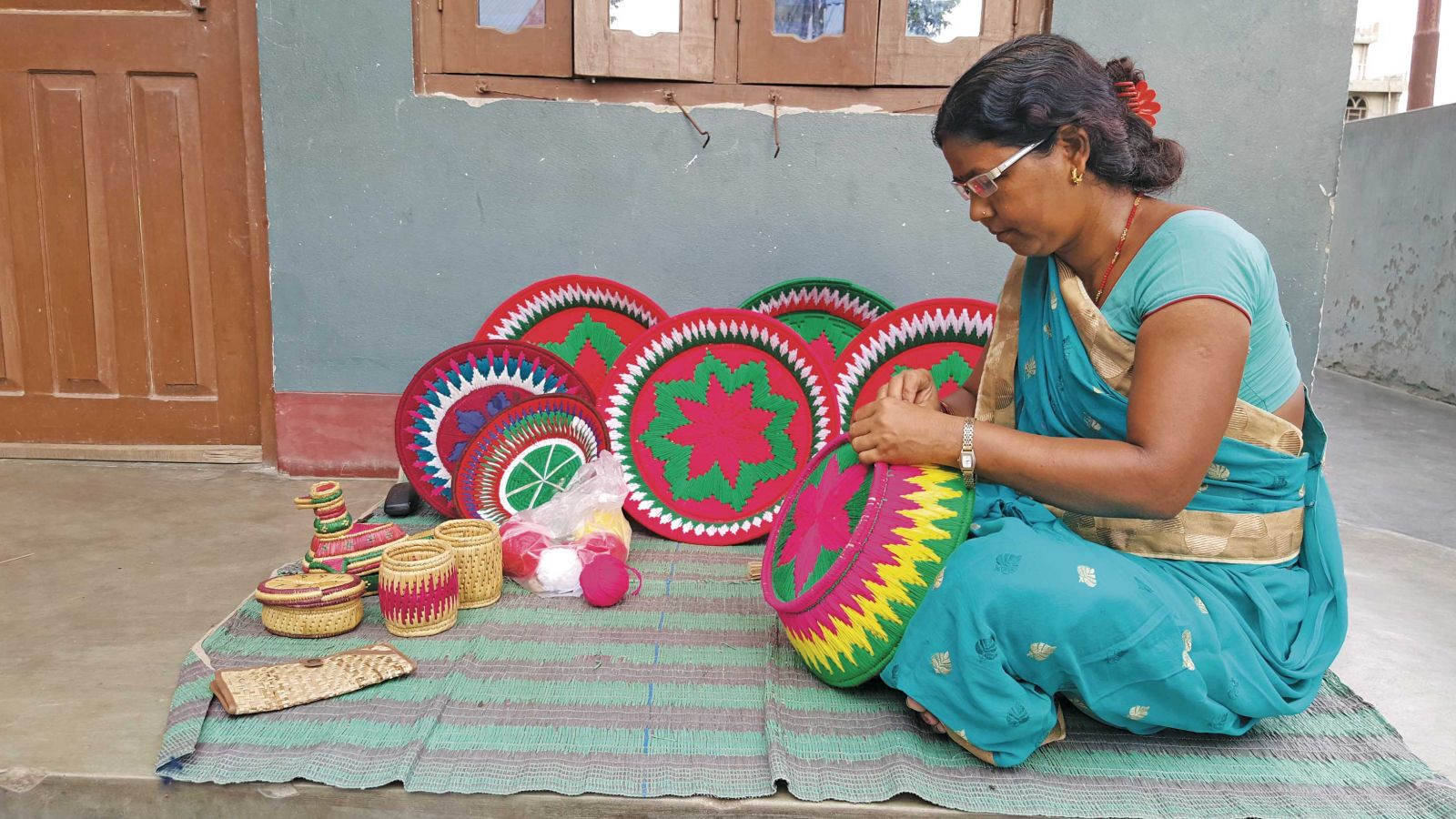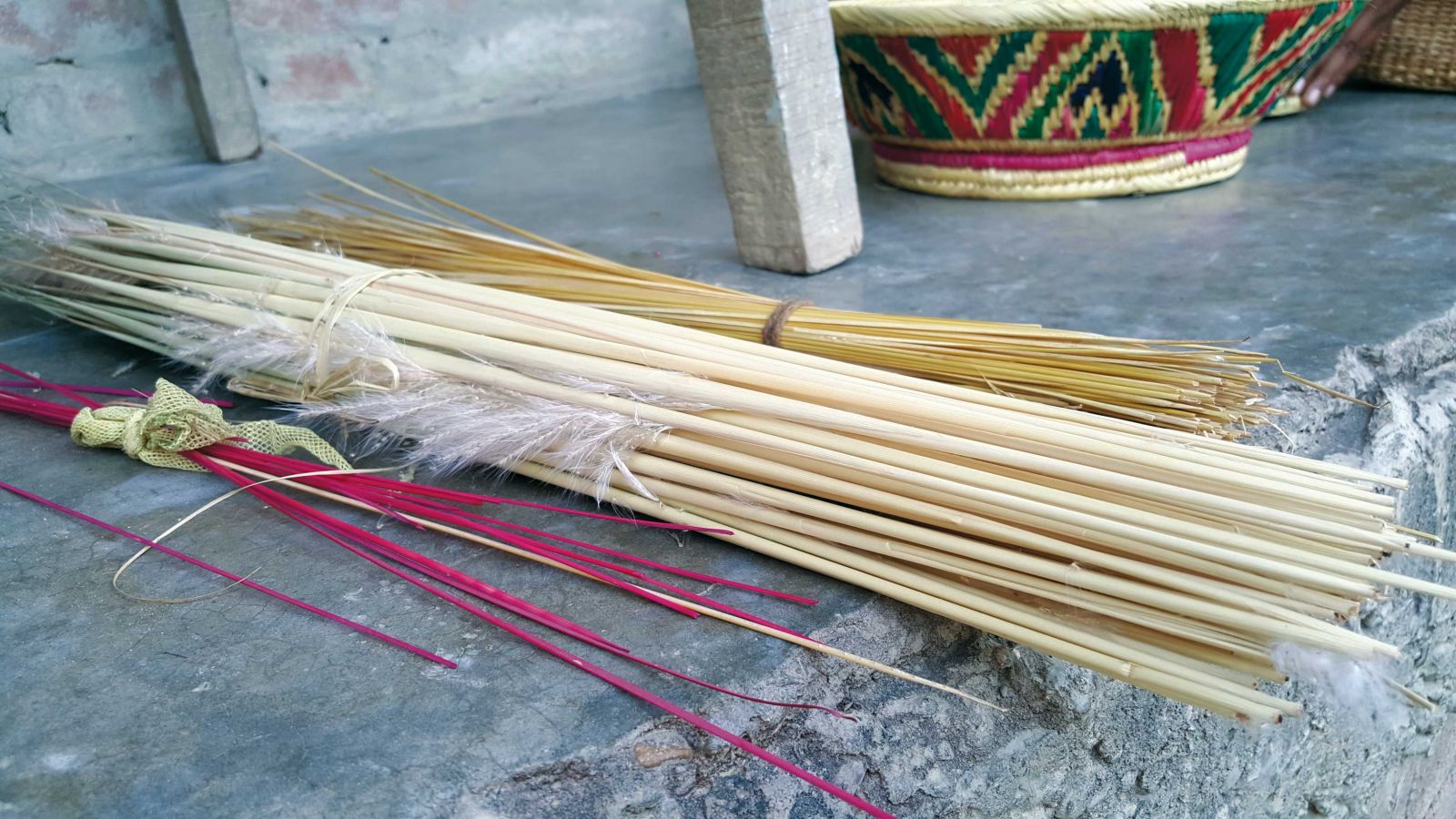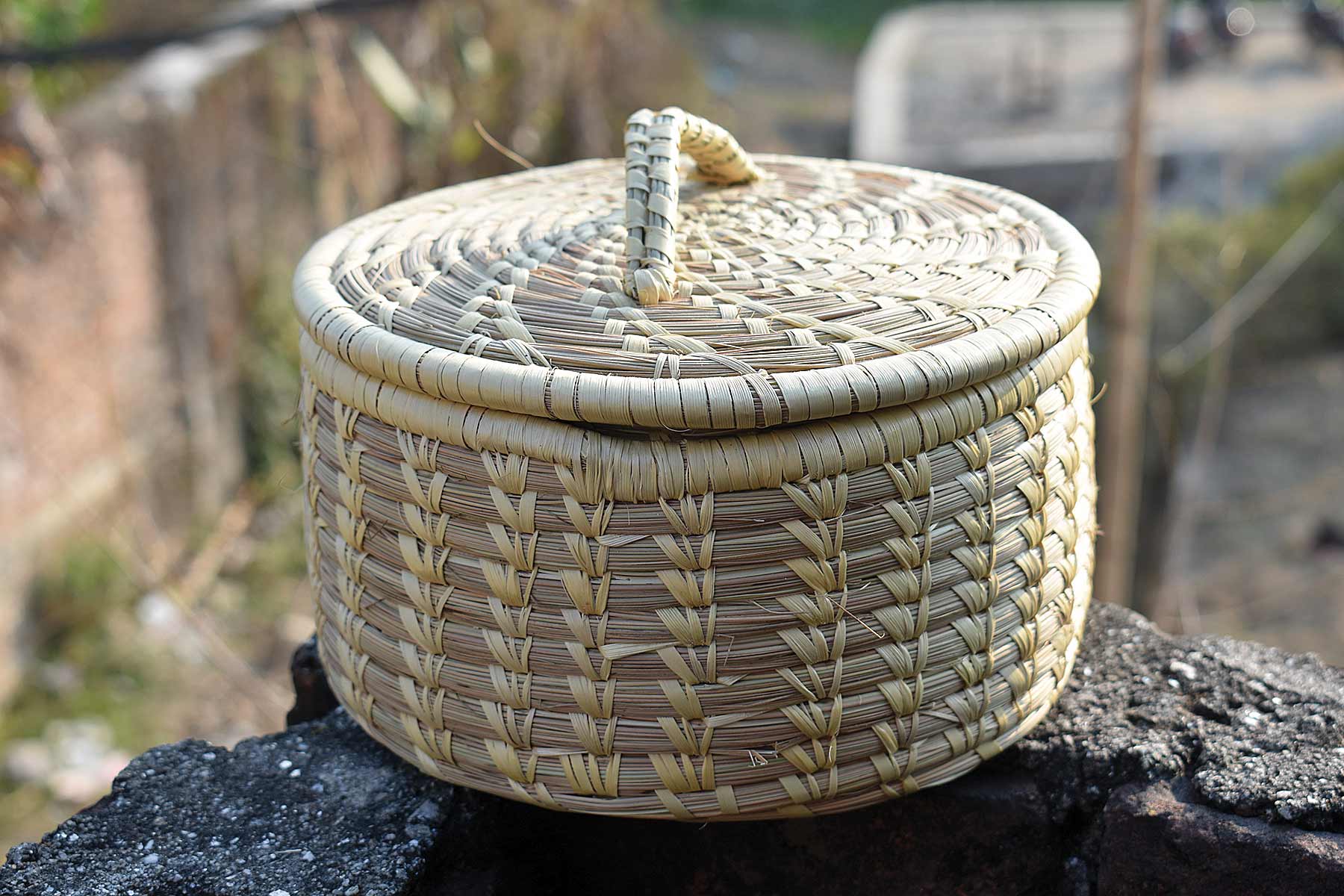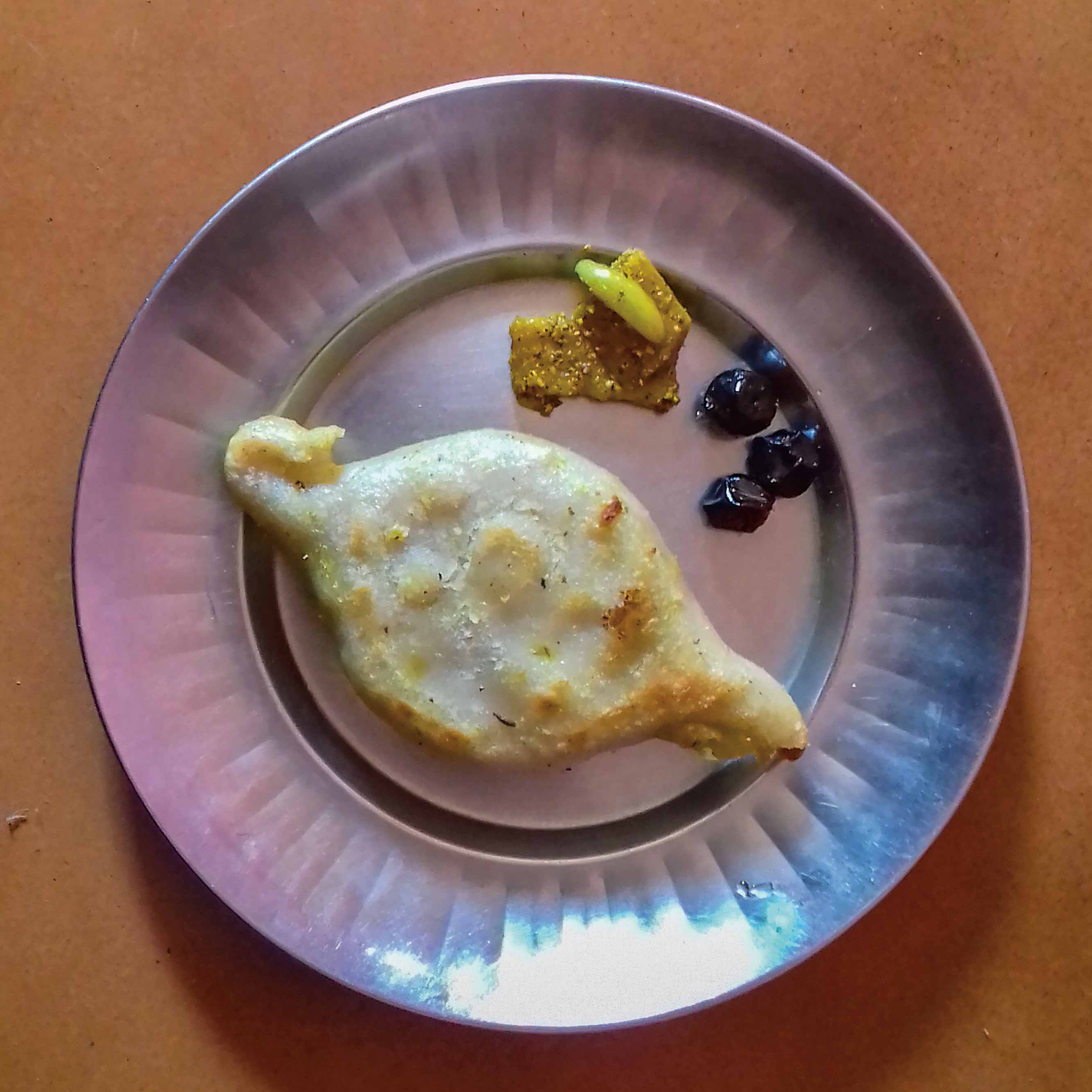
Last September I met with two inspiring women – Parbati Chaudhary and Naina Chaudhary. Parbati, from Padariya Village, Saptari, lost her husband but didn't lose her hope. She now leads 100 women weaving baskets, mats, bags and other daily use items from sikki, elephant grass, silver grass, wallichia leaves, pater (a kind of reed growing in wetlands), paper reeds and corn leaves collected from wetlands, forests and fields. She sells the handcrafted items in the domestic market and has also exported them as far as the US with the support of WEAN Multipurpose Cooperative Ltd.
"The women weave handicrafts in their free time which otherwise would be spent gossiping or checking Facebook posts," said Parbati. "Now they're financially independent." A basket made from sikki grass with beautiful floral designs, called dhakki in Nepali and daliya in the local language fetches around 120-130 USD for Parbati. But she says the pattern is very difficult for the women weavers and only some Tharu women with a high level of patience agree to weave the dhakki with intricate designs.


Naina Chaudhary, from Haripur Village in Saptari, due to unavailability of sikki during all seasons, weaves the same dhakki from wool. She sells them at the local market and each one brings her about Rs. 500. “I learnt the tricks of the trade from Parbati,” she said. “However, I decided to start a business of my own.” Naina makes beautiful silver grass handicrafts that fetch better prices but there's not much demand for the fancy items she can produce at local markets. Women like her need a helping hand to get these products to national and international markets.
Not only Parbati and Naina, but many Tharu and Maithil women from the southern plains of Nepal have been weaving baskets of all shapes and sizes from the kans grass since ages and the art has been passed from one generation to another. The mothers and grandmothers have been teaching the young ones to weave baskets out of kans, considered useless, and sikki, regarded as pure.


Let’s have a look at how they weave these beautiful baskets. The women collect the kans stems just before they bear flower (they call it gabaha in the Tharu language). Then they take out the flowery filaments and leave the stems to dry. Since the stem then becomes hollow, it can be wound into any shape and size.
The upper and lower parts of the stem are trimmed. They can be used as the base material to wound the kans stem around. They also collect the kans grass from much earlier than their flowering stage. The stalks are usually hard then and can be used as the base material for the baskets. People also use fistfuls of kans grass from this stage of growth as a broom.
The gabaha is soaked in water so that it becomes flexible. A takuwa, needle-like equipment with a rounded end to hold on while weaving a basket, is needed, besides the grass of course, to weave the baskets. Taking a fistful of the kans grass, the gabaha is wound around it. Then it is swirled to give a round shape binding the framework with the gabaha. With the help of the takuwa, holes are made in the structure and gabaha is inserted in those holes binding the kans till it takes the shape a conical basket without a base, which is added later.
The beautiful baskets called pauti and daliya in the local language of the Terai are woven similarly. First, sikki stems are collected and torn apart into two equal splinters. Then they are left to dry. Once dried, they are coloured.
The coloured sikki splinters are soaked in water and as in the case of kans grass baskets, with the help of a takuwa the colourful sikki splinters are wound around kans grass. They create beautiful colourful patterns on the basket by further weaving sikki splinters on the basket – that requires some real skills!











